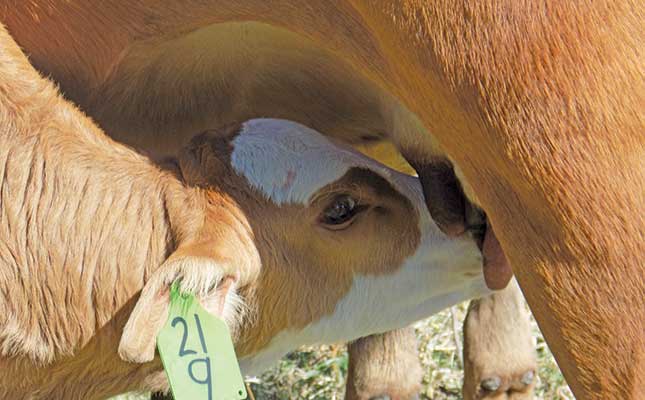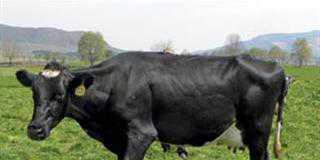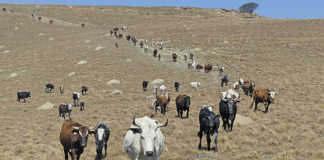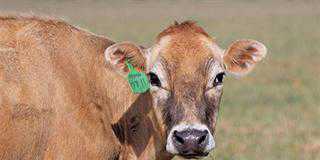
Photo: Annelie Coleman
The sad truth is that the average national beef cattle weaning rate in South Africa fluctuates between 50% and 55%.
This is dangerously low, and a financial impediment to farmers. In order to meet the expected increase in the demand for beef in the foreseeable future and to remain in business, the beef cattle production sector needs to markedly push up weaning rates as a matter of urgency.
Without the selection of top, high-potential heifers and sound management of the heifer herd, producers will find it exceedingly challenging to realise optimum reproduction efficiency in a cowherd.
The goal is to limit the unproductive growth phase, achieve a high heifer conception rate, minimise calving problems, and attain above-average weaning weights and optimum reconception rates for first-calf cows.
This calls for a marked increase in South Africa’s average herd fertility, as profitable beef cattle production starts with the selection of highly fertile heifers. Fertility coupled with the attainment and maintenance of the animal’s target weight is of vital importance. Average herd weight is determined by the collective weight of all female animals in a herd from their second lactation onwards.
Heifers should preferably not be mated before they have reached 65% of the herd’s average weight, so that they can calve upon reaching 85% of the herd’s average weight.
With an average herd weight of, for instance, 500kg, producers should breed their heifers at 325kg, so that they calve at a weight of 425kg.
At a weaning weight of 200kg to 220kg, these breeding weights could easily be obtained with the use of lick supplementation and good grazing management. It is, however, necessary to keep in mind that the objective is not to develop fat heifers, as this will have a negative impact on fertility and lead to calving difficulties.
To prevent overweight animals, the use of quality protein is advised. This includes protein in the form of soya oilcake, sunflower oilcake and full-fat soya.
An oversupply of energy (calories) should be avoided, as this may have adverse effects on rumen development and lead to fat heifers that do not breed optimally. Supplements with a well-balanced macro- and micromineral profile are of the essence for heifers to grow to full maturity.
Microminerals play an integral part in physiological development and immunity. In order to wean a quality calf from a first-calf cow and to ensure optimal future conception rates, the animal needs to fit into the environment and farming conditions she is kept in.
This pertains to, for instance, ample grazing that is well suited to larger-framed animals, versus more sparse grazing that will be more ideal for smaller-framed animals by forcing them to walk longer distances.
Heifers and first-calf cows should be kept separately as their nutritional and veterinary requirements differ from that of the main herd.
Breeding and calving
For top performance, breed your heifers a month before your cows and keep the breeding period short at around 45 days. This will allow heifers to calve at the peak of the calving season and provide more time for them to recover.
For a heifer, artificial insemination is often a good option, as it allows for the opportunity to measure the animal’s pelvis, which is an indication of the heifer’s ability to calve. While it is agreed that birthweight is the most important measurable trait affecting calving difficulty, there is evidence that the size and shape of the pelvis also affect a heifer’s calving ability.
It is vital to choose the right bull for heifers. Calving ease is one of the most important selection criteria for bulls earmarked for heifers.
A bull-to-heifer ratio of between 1:15 and 1:25 is recommended to ensure optimum conception and calving rates.
Heifers need to be closely monitored during the calving season. If the calf is not born within 30 minutes after the legs first appear, the dam needs to be assisted.
Every additional 30 minutes during the birth adds an additional six days to the mother’s intercalving period. This is because the stress of birth on the cow is extended. A longer birthing process may also lead to damage to the reproductive system.
The sooner the heifer calves, the more time she has to recover and the higher her chances of reconception. For the producer, this means a regular supply of calves from the heifer during her lifetime, coupled with increased weaning weights compared with heifers that take longer to calve.
Heifers that take longer to calve may produce weaners with lower weights, as they have had less time to recover from the birth.
Nutrition
The objective of any lick supplementation programme is to allow livestock access to nutrients that nature cannot supply. This is vital for optimum production as well as comprehensive herd immunity. The goal of a supplementation programme is to safeguard and optimise grazing intake, increase digestibility and improve resistance.
However, supplementation should not be confused with substitution. Substitution occurs when lick intake replaces grazing intake, decreasing grazing efficiency and vastly increasing input costs.
On average, a mature heifer consumes about 3,65t of grazing/year, which amounts to around 10kg/day. If, for example, you supplement with a lick at 652g/day, based on three months of production lick, five months of winter lick, and four months of phosphate lick, you should ask yourself whether lick substitution is worth its while, as it only makes up between 6% and 8% of a heifer’s feed intake, but represents 30% of feed input costs in an extensive farming operation.
However, running a herd exclusively on grazing would result in nutritional deficits that can only be prevented by a comprehensive lick supplementation programme. While fertility is the most important selection trait for a heifer, without a well-balanced diet, she will struggle to perform to her true potential.
A well-balanced lick programme will increase calving percentage, improve weaning weight, increase reconception rates and also allow for optimal grazing utilisation.
At the end of the day, improving the profitability of the operation is the main objective, and without top-performing animals, this is nearly impossible.
Developing a lick programme
The ultimate decision on the best lick option for a specific farming business needs to be based on the quality of grazing available. For example, cattle in more extensive farming conditions with a limited supply of grazing might be in greater need of an energy lick than a phosphate lick.
The quality of grazing will determine whether or not to supplement or substitute grazing. The type of grazing also plays a decisive role; whether animals are kept on sweetveld or sourveld will have a major influence on the winter protein content of the forage, as well as the digestibility of the grass.
Sweetveld producers will generally not need to supply as much protein in the winter compared with those in sourveld areas.
Keeping different livestock species together also plays a role in the lick programme. For example, sheep are much more sensitive to urea toxicity, and producers are advised to refrain from using licks with high urea levels in instances where sheep and cattle are grazed together. The production status of the herd should also be kept in mind.
For example, during a winter-calving period, a production lick with balanced protein and energy levels are required. The impact of the different seasons also needs to be considered. Typically, dry veld requires protein and urea-containing production licks, while active growing veld requires phosphate licks and licks low in urea.
Good condition boosts fertility
To optimise fertility, you need to first consider cow condition. The main reason for this is that a cow gaining condition has a positive protein and energy balance, and there is no excess breaking down of fat, which negatively affects fertility. Loss of body condition or weight is caused by the cow breaking down fat, which in excess could lead to lowered fertility.
Overfeeding of urea during the mating season should be avoided as it tends to increase blood urea nitrogen levels, which will also negatively affect fertility.
Trace mineral balance is also crucial to ensure productivity. Zinc deficiencies will lead to poor conception, placental problems and poor semen quality. Manganese deficiencies will result in reduced conceptions, increased time to ovulation, abortions, silent heat and poor male libido. Copper deficiencies will result in poor conception, placental problems and abnormalities, as well as embryonic death.
Cobalt deficiencies can lead to poor immunity, increased calf mortalities and poor colostrum quality. Selenium deficiencies will manifest as poor foetus development and resorption of the foetus, as well as poor semen quality.
Preparing bulls for the breeding season is just as important as preparing heifers and cows. Bulls constitute around 3% to 4% of a herd, but contribute 50% of breeding success. It is important to remember spermatogenesis takes 60 days, and that nutritional management for breeding should then already have started.
Quality grazing and good supplementation with trace minerals will supply the required needs for semen quality.
In terms of the cowherd, the most important time is the month before calving until two months after calving. Manage cow condition to aid reconception and good udder development, so that the cow can supply quality colostrum and the optimal milk flow to ensure a healthy calf.
To ensure you are supplying the correct nutrition to optimise your cow-calf operation, contact your feed supplier and get them involved to ensure your agricultural operation remains competitive and viable.
Email Henco Leicester at [email protected].













